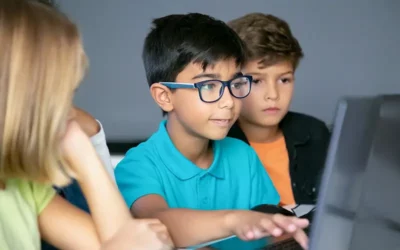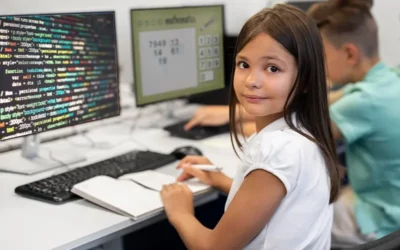Financial literacy is more than just understanding numbers; it’s about building the foundation for a secure financial future. It involves teaching children the fundamental concepts of budgeting, saving, investing, and comprehending the true value of money. This comprehensive guide aims to support parents, guardians, and educators in instilling these essential financial skills from a young age.
Table of contents
- Setting the Foundation
- IV. How to Teach Kids
- Creating a Learning Environment
- Resources and Recommended Books
- Building Financial Responsibility
- Preparing for College Expenses
- The Role of Schools and Institutions
- Teaching Values Alongside Money
- The Importance of Flexibility
- Preparing for Life Transitions
- Involving Kids in Family Finances
- The Impact of Financial Literacy
- Common Mistakes to Avoid
- Conclusion
- Frequently Asked Questions (FAQ’S)
Setting the Foundation
A. What is Financial Planning for Kids?
Financial planning for kids is not just about introducing and teaching kids about money; it’s about giving them a path to follow for their money journey. It means teaching children how to handle their money wisely, making sure every cent has a purpose. By learning how to budget, save, invest, and understand money’s real worth, kids get valuable tools to make good financial choices all their lives.
B. Why Begin Early?
Early childhood education will make a huge impact, Starting to teach kids about money when they’re young is like planting the seeds for smart money management. It’s important because kids are really good at learning when they’re little. This is the perfect time to help them develop good money habits. When you start early, kids have plenty of time to practice and remember these money lessons for kids, setting them up for a lifetime of financial success.

C. Why Teach Kids About Money Early?
Teaching kids about money when they’re young brings lots of benefits. It helps them learn to handle their money wisely. It also helps them think carefully about their financial choices. Learning about money early on also teaches kids the value of hard work and saving. And, it lets them make good financial choices starting at a young age, helping them plan for their future. Starting early is like building a strong base for their financial future.
IV. How to Teach Kids
Getting kids interested in money can be like taking them on a money adventure. Stories with characters they can relate to and everyday situations are great ways to teach them about money in a fun and easy-to-remember way. These stories help kids understand tricky money ideas and make them excited to learn about money.
A. Real-Life Money Experiences
Learning by doing is a smart way to teach kids about money. When kids use their money to buy things or save for something special, they learn how to make good money choices. It’s not just about teaching money; it’s about helping kids feel like they are in charge of their own money.
B. Apps and Tools
In today’s world, there are lots of tools like apps or financial games for students or kids that make teaching kids about money even better. These tools help make money education fun and easy. They’re like a bridge between old-fashioned money ideas and the new world of technology. These tools make learning about money more interesting and easy for kids who love tech.
Creating a Learning Environment
A. Open Communication
Creating an open and non-judgmental environment is crucial for children to feel comfortable discussing financial matters. Encouraging open communication about money allows kids to ask questions, express concerns, and develop a healthy relationship with finances.Follow the effective communication tips to make your communication effective.
Encouraging kids to ask questions about money and financial planning fosters a curiosity that leads to deeper understanding. By addressing their inquiries with patience and clarity, parents and educators can help children become more financially savvy.
Moreover, Children learn by observing the behavior of those around them. By modeling responsible financial habits and decision-making, parents and educators can become role models for kids, reinforcing the importance of financial planning and responsible money management.
Resources and Recommended Books
A. List of Books for Different Age Groups
Providing age-appropriate books on financial literacy is an effective way to engage kids and facilitate their understanding of money matters. By introducing captivating stories that incorporate financial themes, children can learn valuable lessons while enjoying the reading experience.
B. Online Courses and Educational Websites
In addition to books, online courses and educational websites offer a wealth of resources for teaching financial planning to kids. These platforms provide interactive modules, quizzes, and engaging content that cater to different learning styles, enhancing children’s financial knowledge.
Building Financial Responsibility
A. Encouraging Savings
Teaching children the importance of saving is like giving them a superpower. It helps them create a financial safety net and plan for things they want in the future. By encouraging kids to put a part of their money into savings, parents and educators are helping them build a strong foundation of financial responsibility right from the start.
But it’s not just about saving; it’s also about teaching kids that saving can make their dreams come true. Whether it’s a new toy, a special trip, or something big like a college fund, saving money helps them make their dreams a reality.
B. Setting Financial Goals
Setting goals is important to achieve anything, helping kids set financial goals is like giving them a treasure map. It’s a way for them to learn how to plan and decide what’s most important. When children have clear goals, it’s like putting a target on the things they want. This teaches them the value of waiting for the things they desire and the joy of achieving their financial goals.
It’s not just about having goals; it’s about showing kids that they can work toward something special. Whether it’s saving for a video game, a bike, or even their education, having financial goals teaches kids about planning and patience.
C. Tracking Progress
Tracking progress is like giving kids a map of their money journey. It helps them see how far they’ve come and how much closer they are to their goals. When kids can see their savings growing and getting closer to their targets, it’s like a reward for their hard work.
But it’s not just about tracking; it’s about teaching kids to be in control of their money. By keeping an eye on their savings, investments, and goals, kids can make sure they’re going in the right direction. This not only helps them stay motivated but also builds good money habits for life.

Preparing for College Expenses
A. Exploring Savings and Investment Options
Preparing for college expenses involves exploring various savings and investment options that can help cover tuition fees and other costs. Through discussions and research, parents and educators can introduce kids to strategies such as 529 plans, scholarships, and investment vehicles like stocks and bonds.
C. Managing a Student Budget
Teaching kids how to create and manage a student budget equips them with vital skills for college life. By introducing concepts such as income, expenses, and responsible credit card usage, children can navigate their financial responsibilities while pursuing their higher education.
The Role of Schools and Institutions
A. Advocating for Financial Education in Schools
Advocacy for financial education in schools can lead to comprehensive financial literacy programs that benefit all students. By engaging with school administrators and policymakers, parents and educators can ensure the integration of financial planning into the curriculum, preparing students for their financial future.
B. Existing Financial Education Programs
Identifying existing financial education programs in schools and institutions provides additional resources for teaching kids about money. Collaborating with such programs or recommending them to educators can further enhance children’s financial knowledge and skills.
Teaching Values Alongside Money
A. Charitable Giving
Incorporating charitable giving into financial planning helps kids develop empathy and a sense of social responsibility. By encouraging children to donate a portion of their savings or earnings to causes they care about, parents and educators instill values of compassion and generosity.
Teaching kids about ethical spending educates them on the environmental and social impact of their purchasing decisions. By discussing topics such as fair trade, sustainability, and responsible consumption, children can make more conscious choices when managing their money.
The Importance of Flexibility
A. Adjusting the Approach as Kids Grow
As children grow and their understanding of financial concepts deepens, it is crucial to adapt the teaching approach. By tailoring the lessons to their evolving needs and age-appropriate challenges, parents and educators can ensure continuous learning and engagement.
Every child has a unique learning style, and adapting teaching methods to suit their individual preferences enhances their understanding and retention of financial concepts. Whether through visual aids, hands-on activities, or discussions, tailoring the approach ensures an effective learning experience for each child.
Preparing for Life Transitions
A. Graduation and Financial Independence
Preparing kids for life transitions, such as graduation and financial independence, sets them up for success in the real world. By teaching them about financial responsibilities, such as managing rent, bills, and employment income, children are better equipped to navigate their financial journey as young adults.
When children move out of their parental home, they face new financial challenges. Teaching them about essential expenses, budgeting for rent, groceries, and utilities, helps them develop the skills necessary for independent living.
Involving Kids in Family Finances
A. Family Budget Meetings
Involving kids in family budget meetings exposes them to financial decision-making and helps them understand the dynamics of managing household expenses. It allows children to contribute ideas and learn the importance of budgeting as a family unit.
Assigning age-appropriate chores with monetary rewards teaches kids the value of work and earnings. Through this system, children learn about financial responsibility by understanding that money is earned through effort and can be used for personal goals or savings.
The Impact of Financial Literacy
A. Long-term Benefits for Kids
The impact of financial literacy on kids extends well into their adult lives. By equipping them with the necessary skills and knowledge, we empower children to make sound financial decisions, avoid debt, and build a strong foundation for their future financial success.
By teaching financial planning for kids, we are preparing them to navigate the financial landscape with confidence and competence. This not only enhances their individual well-being but also contributes to a more financially literate society as these children grow into informed and responsible adults.

Common Mistakes to Avoid
A. Being Overly Restrictive
While it is important to teach financial discipline, being overly restrictive can hinder a child’s financial development. It is crucial to strike a balance between guiding children toward responsible money management and allowing them to make individual choices within reasonable boundaries.
B. Neglecting to Review Progress
Failing to review and assess children’s financial progress can result in missed learning opportunities. Regularly reviewing their growth, milestones, and challenges enables parents and educators to provide the necessary guidance and support tailored to the child’s needs.
Conclusion
Teaching financial planning for kids is a significant investment that pays off in numerous ways. By imparting financial literacy from a young age, we empower children to achieve financial independence, make informed choices, and navigate life’s financial challenges successfully. Through a comprehensive approach that combines interactive teaching methods, open communication, and a focus on individual growth, we can ensure that the next generation is well-prepared to achieve financial well-being.
To get your hands on more educational and free resources on coding for kids, robotics for kids, financial education for kids, etc., do check out the BrightCHAMPS Page now!
To get your hands on more such educational and free resources on coding, robotics, game development, etc., do check out the Brightchamps Blog Page now!
Frequently Asked Questions (FAQ’S)
A1. It’s a good idea to start teaching basic financial concepts to your child at an early age, typically as soon as they can understand the value of money. Begin with simple lessons about saving, spending, and the importance of setting goals. As they grow, you can introduce more complex financial ideas gradually.
A2. If your child doesn’t seem interested in money matters, don’t worry. Every child is unique, and their interests may develop at different rates. Make learning about money relatable and engaging by using games, stories, or real-life experiences. Encourage questions and discussions to pique their curiosity. Be patient, and their interest may naturally grow over time.
A3. Many educational apps are trustworthy and provide valuable financial education. However, it’s essential to review and select apps that are appropriate for your child’s age and offer accurate, reliable information. Read reviews, consult other parents, and test the apps yourself to ensure they align with your child’s learning needs.
A4. Making financial education enjoyable is key to keeping your child engaged. Consider using games that involve money management, such as board games or interactive apps. Create scenarios where they can make financial decisions, like setting up a “store” at home or managing a play budget. Use relatable stories and characters to illustrate financial concepts. The more interactive and relatable the learning experience, the more fun it will be for your child.


 We are an army of educators and passionate learners from BrightChamps family, committed to providing free learning resources to kids, parents & students.
We are an army of educators and passionate learners from BrightChamps family, committed to providing free learning resources to kids, parents & students.












